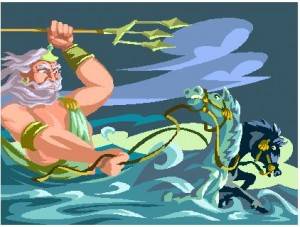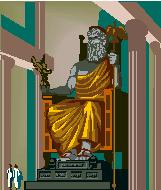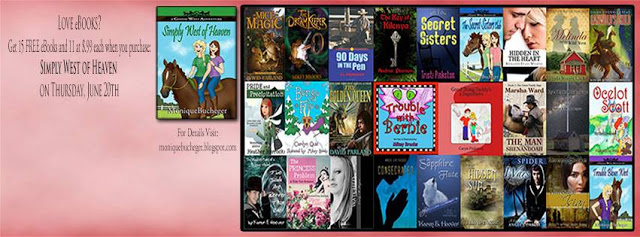Reality has taken a strange turn of events lately, becoming fiction and arcing out into quite possibly the greatest spy story since the Cold War.
There’s a saying in my line of work, it involves a couple of expletives and the rationale that truth is stranger than fiction.
Consider the news coverage over the past several months, the conspiracy theories that have popped up and the whistle blowers who are making history.
When we write fiction, there are always certain beats that you aim to hit. And when I long for inspiration, sometimes the best medicine is a quick trip to the television and a tune in to the nightly news.
Now, in the interest of full disclosure, I do live in a rather strange place. We have face eating zombies and killer bees. Primordial forests and dank swamps. But it wasn’t a local caper that caught my muse this time.
No, it was something on a more global scale. I won’t get into the specifics, or even mention the incident for fear of coloring this blog political in any way. So, instead let’s focus on a few general beats that every story needs to succeed. Every night when you watch the news, there is always a beginning, middle, and end to every story. Heck, that’s why they call them stories. News media operates in a reverse pyramid formula where the most important element is mentioned first. You can take that theory and apply it to fiction as well. All good stories should start with the most important thing that has ever happened to your character. It’s something that triggers the rest of the plot to move forward.
Let’s take a news event and break it down:
Catalyst – Every story begins with a precipitating event that sets your main characters on a collision course with destiny. In this case, something that has far reaching global implications. Do we hold Pandora’s Box? Did we just set off a nuclear bomb or leak a secret government plot?
Reaction – The main characters react to the catalyst, sometimes in strange or unusual ways. Sometimes even more mundane. Do we flee the country? Blast off to space? Vow to seek revenge?
Romance – Do the characters fall in love? Fall out of love? Do they sacrifice their relationship to save the world?
Climax – The chase is on, the reaction boils over and spills into a global conflict. The gods have awakened and they are angry. Pandora’s box is open. Nuclear winter is here.
Resolution – Does your hero go to jail? Get the girl? Save the world? Or tragically die trying to do the right thing?
It’s not just news that we can draw inspiration from. I’m a big fan of conspiracy theories. Not because I believe in them, but because they tell a great story and lead to some awesome What If moments. If I recall correctly, Stephen King writes most of his books under a “What If?” scenario. Let’s take a few of the more common conspiracy theories and break them down into a story.
Chemtrails:
Certain conspiracy theorists believe that every time a plane flies overhead, its contrail is a secret mixture of chemicals used for mind control, population control, weather control, or any other sort of illicit means you could think up. So – let’s play What If.
What if your main character is an air force pilot, retired. Let’s call him Jim for ease. Jim flies for GloboAir. Before a Trans-Atlantic flight, he is approached by a shadowy man in a business suit. The man claims to be from the TSA and there’s been a threat to the security of the plane. The federal government received “credible information” that a terrorist organization was preparing to shoot down a commercial airliner as it passes through the 48th Parallel. The shadowy man offers an alternative flight path that leads him, his crew, and his passengers safely out of harm’s way. The detour he is provided secretly takes him into a military operation in which his plane has become a weapon of mass destruction. The chemtrails that his plane are set to leave will result in a monster tsunami that will destroy a large city, which would open the country up to a mutually beneficial trade agreement as the USA helps them rebuild from their disaster. Jim discovers the secret plot while in the bathroom and vows that he will not become a pawn in a global chess game. He ignores the new flight coordinates and his plane goes off the air traffic control flight path. Military jets scramble under the belief that Jim’s plane has been hijacked. Now Jim is on a race against time to save his passengers and the world.
Bermuda Triangle:
The Bermuda Triangle is more of a supernatural conspiracy in which people believe that there is a strange reason so many ships or planes disappear in the North Atlantic Ocean off the coast of Florida, between Puerto Rico and Bermuda. Popular victims of the Bermuda Triangle include Amelia Ehrhardt, USS Cyclops, and the creepiest to me, The Connemaria IV.
Let’s play What If.
Jim, the fisherman runs a charter vessel off the coast of Florida. He accidentally sails into the Bermuda Triangle, where he is accosted by the ghosts of the Connemaria IV. A chase ensues as the ghosts attempt to destroy Jim’s vessel. While fleeing, he ends up running aground in the middle of the ocean. There he discovers the lost city of Atlantis and falls in love with a beautiful siren named Janis. Jim becomes the target of an assassination attempt when Janis’ boyfriend, John finds out. The assassin fails and accidentally kills the king with poison meant for Jim. Now Jim is accused of a crime he didn’t commit and trapped by people he could never hope to understand.
Elvis:
One of the longest running conspiracy theories is that Elvis Priestly never really died.
Elvis Priestly, Knight of Thorns, had to fake his own death so that he could begin his secret life as a vampire hunter. Seriously, how fun does that sound?
There are plenty of other conspiracy theories out there that are ready to burst with creative energy. Operation Northwoods, MK-Ultra, Psychic Warfare, New World Order syndicates, and dozens more beyond that. So, don’t get discouraged when you hit a stumbling block or can’t think of the next great story. Just know that whatever impetus you need to propel your muse back into life can be as simple as a click away.




